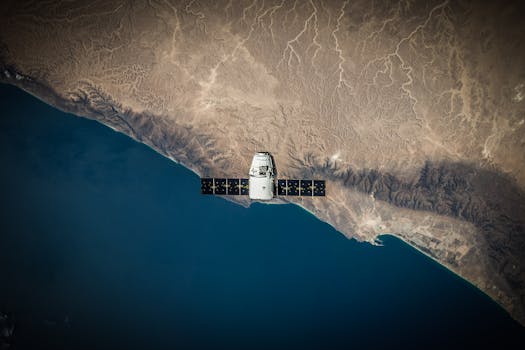
MEO Satellites: Revolutionizing Global Communication with Medium Earth Orbit Technology – MEO Satellites
MEO satellites, or Medium Earth Orbit satellites, are a type of satellite that operates at an altitude of approximately 2,000 to 36,000 kilometers above the Earth’s surface. This unique orbit allows MEO satellites to provide global coverage and connectivity, making them an essential component of modern satellite communication systems. MEO satellites have been used for a variety of applications, including navigation, communication, and weather forecasting.
The use of MEO satellites has become increasingly popular in recent years due to their ability to provide high-speed data transfer and global coverage. This has made them an attractive option for companies and organizations looking to establish reliable and efficient communication networks. One of the key benefits of MEO satellites is their ability to provide seamless coverage, even in areas where traditional communication infrastructure is limited or non-existent.
How MEO Satellites Work
MEO satellites work by transmitting and receiving signals to and from Earth-based stations. The signals are transmitted through a network of ground stations, which are connected to the satellite via a radio frequency link. The satellite then amplifies and re-transmits the signal to its destination, allowing for global communication and connectivity. MEO satellites use a variety of frequencies, including C-band, Ku-band, and Ka-band, to transmit and receive signals.
One of the key advantages of MEO satellites is their ability to provide high-gain antennas, which allow for more efficient signal transmission and reception. This, combined with the use of advanced modulation and coding techniques, enables MEO satellites to achieve high data transfer rates and reliable communication. Additionally, MEO satellites are less prone to interference from other satellites and terrestrial systems, making them a more reliable option for critical communication applications.
Applications of MEO Satellites
MEO satellites have a wide range of applications, including navigation, communication, and weather forecasting. One of the most well-known applications of MEO satellites is the Global Positioning System (GPS), which uses a network of MEO satellites to provide location information and timing signals to GPS receivers on the ground. MEO satellites are also used for satellite communication, providing high-speed data transfer and global coverage for applications such as broadband internet, voice communication, and video conferencing.
In addition to navigation and communication, MEO satellites are also used for weather forecasting and Earth observation. MEO satellites can be equipped with a variety of sensors and instruments, including cameras, spectrometers, and radar systems, which allow them to collect data on weather patterns, ocean currents, and land use. This data can be used to improve weather forecasting, monitor climate change, and manage natural resources.
Benefits and Challenges of MEO Satellites
The use of MEO satellites offers a number of benefits, including global coverage, high-speed data transfer, and reliable communication. MEO satellites are also less prone to interference from other satellites and terrestrial systems, making them a more reliable option for critical communication applications. However, the use of MEO satellites also presents a number of challenges, including the high cost of launching and operating a satellite, the risk of satellite failure, and the need for complex ground infrastructure.
Despite these challenges, the use of MEO satellites is expected to continue to grow in the coming years, driven by increasing demand for global communication and connectivity. The development of new technologies, such as advanced propulsion systems and more efficient solar panels, is also expected to improve the performance and reduce the cost of MEO satellites, making them an even more attractive option for companies and organizations looking to establish reliable and efficient communication networks.
In conclusion, MEO satellites are a critical component of modern satellite communication systems, providing global coverage and connectivity, and enabling a wide range of applications, including navigation, communication, and weather forecasting. While the use of MEO satellites presents a number of challenges, the benefits of global coverage, high-speed data transfer, and reliable communication make them an essential tool for companies and organizations looking to establish reliable and efficient communication networks.




